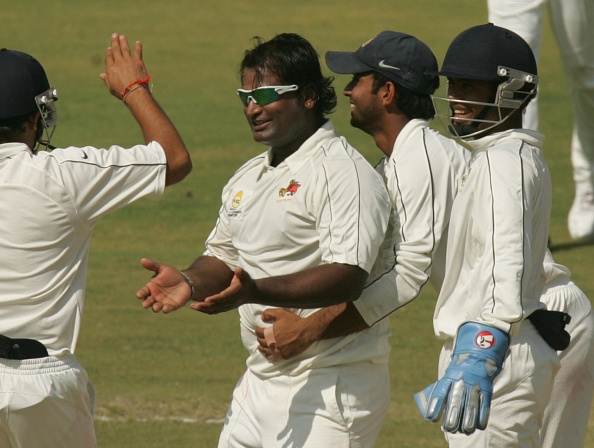Moeen Ali lacks the rip to be consistent: Ramesh Powar
4 Min Read


The Wankhede Stadium, so far, has been a bit two faced. One end has provided turn the other end offered more assistance comparatively. An example of it could be the second day when Ravichandran Ashwin and Ravindra Jadeja were bowling in tandem.
While Ashwin was getting normal breaks from his deliveries, Jaddu, on the other hand, was getting the ball to kick from the surface. Ashwin may have eventually ended up as the better bowler at the end of the day. But, it won’t be wrong to say that Jadeja enjoyed more support from the track than his off-spinning partner.
The turn offered by the pitch has been quite unpredictable. English spinners also experienced the same things. But, why was this happening? The person better suited to ask this question should be the best off-spinner Mumbai has ever produced – Ramesh Powar. The ‘fat but fit’ bowler known for his classical approach was known as slow-death lobbers. Powar is probably the spinner who is most intimate with the 22-yard strip at the centre of Wankhede. For 16 first-class years, he has tormented batsmen here.
“You would get spin if you can land it on a good length. That’s what I have seen so far in this game. Anything shorter or fuller, it’s not going to turn. Spinners love to pitch it fuller — it’s easier to land them there as you can complete your action in the normal way. But there is no turn from there, on this pitch. You have to hit the good length consistently. I can see couple of spots where dust comes up. But to land them consistently, you need an offspinner who has control, quality, a repeatable action, and someone who is very aware of his game. Someone like R Ashwin,” Powar told The Indian Express.
“Did you see the one that turned sharply and hit (Cheteshwar) Pujara on the body?” It was a delivery from Moeen Ali, one of the rare ones from the offspinner that not only turned big but also broke in at a fair clip. Pujara was shaping for a cut and was surprised by the turn and the pace, and just about got his bat out of the way.
“That one turned from a good length,” Powar adds, “But Moeen couldn’t consistently hit that spot. He has a fairly simple action and bowls at a decent speed but lacks the rip (and revolutions) and awareness needed to bowl on this sort of pitch.”
India’s wicketkeeper Parthiv Patel was asked whether it was the surface or difference in the quality of the spinners that mattered. “More than the surface, I think the quality of our bowling is far better. Our bowlers get definitely more revolutions on the ball than what their spinners are doing. And obviously, we vary our pace very well. We have a deceived a lot of players in the air than just waiting for the help of the wicket.
“As you know, on a red soil wicket, it is very very difficult to contain scoring rate and we did that in the second session and that is the reason we got wickets in the third session,” Patel said.
“We (Indian batsman) don’t have to go over the top and try and play a sweep or a reverse sweep because we know that a bad ball is coming soon.”
The pitch too did play a part in the process, of course. Back in 2007, here at Wankhede, Powar had got Dravid with a ripper of an off break. It was flighted on a good length, around off and turned in with bounce, forcing Dravid to edge a jab to backward short leg. It was the second hour of the play, and the ball continued to turn and bounce for the rest of the day. But came the second day, the turn evaporated from the surface and Dravid hit a double hundred in the second innings to help Karnataka draw the game.
“Wankhede does throw up such wickets now and then. It’s the moisture that makes the ball turn as much on the first day. Just like that match referred. Then the pitch settles down and plays real good on day two and three.”
Powar reckons this pitch would assist turn after tea on the third day, and would most likely offer lots more help on the final two days. “It’s sort of a dry wicket. I expect it to help the spinners in the final session on day 3, and from then on continue to get drier and help spinners.”
The Wankhede track has been under fire in the last couple of seasons for its flat tracks. Even the home team Mumbai had complained about it last year, and Powar fears that Mumbai, always known for bounce and good sporting tracks is losing its sheen.
“The pitches aren’t what they used to be of course. Paata ho gaya rey in general but this one I can see they have left it dry; wait till tea on day three and later, day 4 and 5,” Powar said. “And it would again look different when the Indians are bowling.”
Download Our App